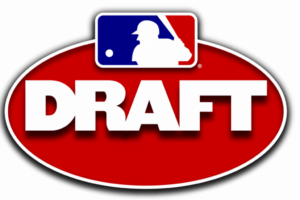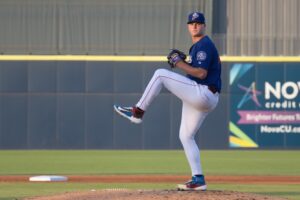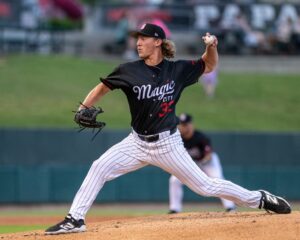State of the System Series: Recap
With all the positions now covered, I want to write a more general system overview/recap, and will start by identifying what I believe are two of the main strengths and weaknesses of the system at present.
Strengths:
MLB ready, or near MLB ready talent– many of the top prospects in the system are already in Chicago (Jose Abreu, Erik Johnson, Marcus Semien, Daniel Webb, Jake Petricka) or could be there soon (Matt Davidson). 7 of our top 10 prospects, and 17 of our top 25, opened the year in Double-A or above.
Positional depth– with the exception of catcher, there are, more or less, at least two legitimate (i.e. potential impact player) prospects at every offensive position in the system. This is a big improvement from years past, when it was often difficult to name even one legit prospect for some positions. A quick positional overview looks as follows:
1B. Jose Abreu & Keon Barnum
2B. Marcus Semien & Micah Johnson
SS. Tim Anderson & Carlos Sanchez
3B. Matt Davidson & Trey Michalczewski
CF. Jacob May & Adam Engel
COF1. Courtney Hawkins & Trayce Thompson
COF2. Micker Adolfo
Weaknesses:
Lack of top tier pitching prospects– even if you’re being extremely kind, there are no pitching prospects in this system that you could say have ace potential. That’s not unusual though, as ace pitching prospects don’t exactly grow on trees. However, you could argue that the Sox don’t have anyone who projects to be a number #2, and if you don’t think Danish can hold up as a starter long-term and think Johnson will prove ineffective at striking out MLB hitters, then there may not even be a #3 here. The Sox are deep in prospects with back of the rotation potential, though the same can probably be said for the vast majority of farm systems in baseball.
Catcher– throughout the system the catcher position is very weak (unless you consider depth in AAAA type catchers to be a strength). Don’t be fooled by Tyler Flowers’ hot start as it won’t continue. He’s essentially the same player that he’s always been. He’s just riding a crazy .600 BABIP. In fact, if you were to regress Flowers’ BABIP to his career norm (.292), he may be hitting .034.
What’s changed since this time last year?
The corner infield spots were something of a barren wasteland just this time last year, with Keon Barnum the only notable prospect. The acquisitions of Abreu, Davidson and Michalczewski, along with the continued development of Rangel Ravelo in 2013, now makes this an area of strength.
Second base was similarly barren, with Joey DeMichele ranking as the top 2B a year ago. Fortunately breakout stars Marcus Semien and Micah Johnson, who both showed tremendous development with the bat, boosted the Sox. Semien did rank #16 entering last year, but Johnson wasn’t even an honorable mention.
Over the part five years there have been only three prospects in this system that have had elite level potential and they are Gordon Beckham, Chris Sale and Courtney Hawkins. None of our top 25 prospect lists over that time-frame have contained more than one of these prospects. This year you could argue there are 3, with Jose Abreu, Tim Anderson and Courtney Hawkins (again).
The 2013 draft has the potential to be a strong one for the Sox, headlined by Tim Anderson, who has seemingly received nothing but rave reviews from all who have watched him since he turned pro. Tyler Danish, Brad Goldberg and Andrew Mitchell represent the best of the pitching talent (with Thaddius Lowry and Matt Ball potentially emerging over the next few years), and Trey Michalczewski, Adam Engel and Jacob May (along with Anderson) representing the best of the offensive talent.
The biggest disappointments for the year were probably the poor seasons of Courtney Hawkins and Carlos Sanchez. Hawkins’ struggles were predictable (to some extent) given his ultra aggressive assignment, but Sanchez’s struggles were far less predictable.
What’s driven recent progress?
Investment is up significantly compared with years past. A big part of that is the new slotting system for the draft. Before, the Sox were regularly at the bottom of the draft spenders, but they’ve spent every dollar available since the new rules were introduced. This has allowed Doug Lauman, Rick Hahn and Co. to bring in more talent than before, and that is a great way to rebuild a system.
Marco Paddy’s influence cannot be understated in relation to the Sox’ increased presence in the Latin American/International Free Agent market. During, and in the immediate aftermath of the Dave Wilder era, this was near enough a dead source of talent for the Sox. The odd guy trickled through, such as Fautino De Los Santos, Eduardo Escobar, Juan Silverio and Andre Rienzo, but they were few and far between and the Sox were never major players for the top available guys. Since Paddy’s arrival, the Sox have handed out several significant six-figure bonuses to top prospect and grabbed one of the best available guys in last years July 2 class, OF Micker Adolfo. This is another great way in infuse talent into a system.
Rick Hahn has done an excellent job over the last year of acquiring prospects (Davidson, Francellis Montas) and young talent (Abreu, Avisail Garcia, Adam Eaton) for the future. While last season’s 99 loss campaign may have felt like a disaster, it may in reality have been a blessing, as it allowed Hahn to scrap Kenny Williams’ favored ‘retooling’ strategy and implement a full-on rebuild. I think this is something that the Sox should have done years ago and I think it will put them in a much better position to be serious playoff contenders in the future.
What can we expect in the coming year?
The Sox farm system is currently on the rise, but it is worth noting that with 7 of our top 25 likely to lose their prospect status this year, the depth of the farm system could take a step back during 2013. That’s a lot of talent to have graduate all in one year, and even holding the #3 pick in the draft might not be enough to improve the farm system’s ranking. Graduating seven prospects to MLB in one year is a great achievement and affirms the positive strides that the organization has been making over recent years. The ultimate goal of a farm system is to develop and supply players to the Major League club, after all, and not to simply hold the highest ranking from Baseball America (which people always seem to get so hung up on).
Early Draft Thoughts:
We haven’t kicked off our 2014 MLB Draft coverage yet, but I wanted to give a few quick thoughts on where things stand at the moment. This draft class is very deep in front-line pitching, and the top four guys at this moment (as per most rankings) are all pitchers. Two of the top four are college guys, in LHP Carlos Rodon and RHP Jeff Hoffman, and the other two are high school hurlers Tyler Kolek (RHP) and Brady Aiken (LHP). Rodon was previously believed to be a lock to go 1-1, but his stock has slipped this year a bit and brought him back to the pack. Aiken is probably my favorite at this point, as he has a good chance to develop three plus pitches with plus command, but I would worry about taking a high school arm at #3. Hahn previously stated his belief that Rodon was the top guy in this class, so the Sox must like him some. They have also been linked to Hoffman. Another name to keep in mind is SS Trea Turner, who was a preseason favorite to go in the top 5, with some even suggesting him as a potential 1-1 guy, but he’s had a poor season and is now considered a borderline top 10 pick. The White Sox have always been rumored to like him though, and I do think it’s still possible the Sox take him, especially if Rodon and Hoffman go 1 and 2.
State of the System Series Links:
Catcher
Corner Infield
Middle Infield
Outfield
Relief Pitching
Starting Pitching






